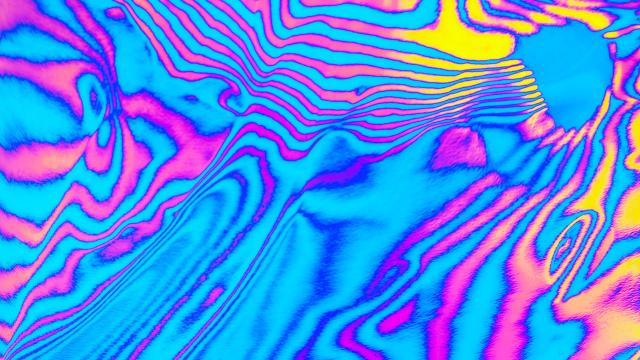In a new study this week, researchers describe their work with experimental compounds that could offer the mental health benefits of a psychedelic drug, without causing people to trip out. Their early research, so far only conducted in mice, might someday provide people with more first-line treatments for illnesses like depression.
Psychedelics are currently being looked at as possible treatments for mental illness. There are now ongoing clinical trials of drugs like LSD and psilocybin (the main ingredient in hallucinogenic mushrooms) for conditions including depression, anxiety, and post-traumatic stress disorder, sometimes in combination with psychotherapy. Just this month, a new study found that psilocybin plus therapy appeared to be as effective as antidepressants in treating moderate to severe depression.

But while these drugs, long banned in the U.S., could soon be accepted as part of the toolbox for treating mental illness, their hallucinogenic side-effects will probably limit their potential for wide use, according to study author David Olson, a chemist at the University of California Davis.
“As a result, I think that psychedelics are likely to serve as the last line of defence if they are ever approved — reserved for patients who have tried everything else,” Olson told Gizmodo in an email. “In contrast, non-hallucinogenic analogs of psychedelics have greater potential for scalability, perhaps even becoming first-line therapies.”
Olson and his team have been at work trying to develop the next generation of psychiatric drugs — namely, drugs that can enhance the brain’s natural ability to rewire or create new connections when needed, known as neural plasticity. And because psychedelics have shown some promise in promoting neural plasticity, one aspect of their research has involved trying to create versions of these drugs that have fewer side effects and that wouldn’t require a long-term regimen.
Olson and his lab collaborated with fellow UCDavis researcher and biochemist Lin Tian and his team to develop a fluorescent sensor that can literally light up in the brains of mice when exposed to chemicals that induce hallucination. The sensor is activated when a compound binds to a cell receptor well-linked to hallucinations, called serotonin 2A. They used this sensor, dubbed PsychLight, to identify a compound that wouldn’t set off its alarm but still created the other antidepressant effects associated with psychedelics. Then they set out to show that one candidate they found, called AAZ-A-154, really did seem to work as intended, at least in mice.
“We demonstrated that AAZ can increase the growth of cortical neurons, which is typical for antidepressant compounds,” Olson said. “Finally, we confirmed that AAZ produces antidepressant effects in rodents using behavioural tests related to motivation and anhedonia [the inability to feel pleasure].”
The team’s findings were published this Wednesday in the journal Cell.
It’s possible that PsychLight would not only allow researchers like Olson to look for new psychedelic-like drugs but also new antipsychotics or undiscovered psychedelic drugs as well. “These previously unknown psychedelics would have potential for abuse, given their hallucinogenic effects, but they might also be used in medicine as so-called ‘second-generation’ psychedelics with optimised pharmacological properties,” Olson said.
Of course, this is all still very early days. But based on his lab’s work, Olson and others have since co-founded Delix Therapeutics, which is hoping to develop AAZ and other drugs for clinical use. If they succeed, they might very well offer much-needed help to the many Americans who struggle with depression and other mental illnesses.
“Given the fact that about 20% of the population will suffer from a mental illness at some point in their life, it is essential that we find medicines that can be administered to a large number of patients,” Olson said.
